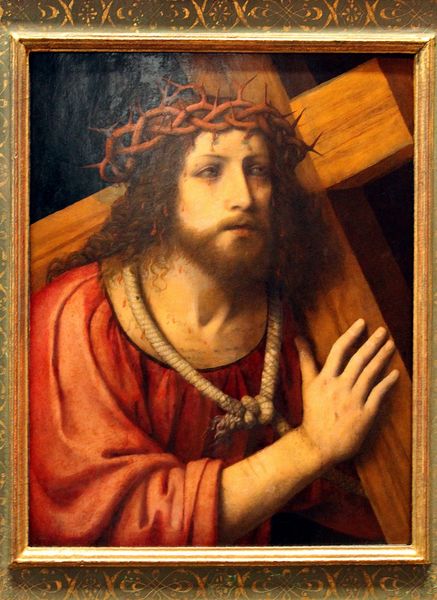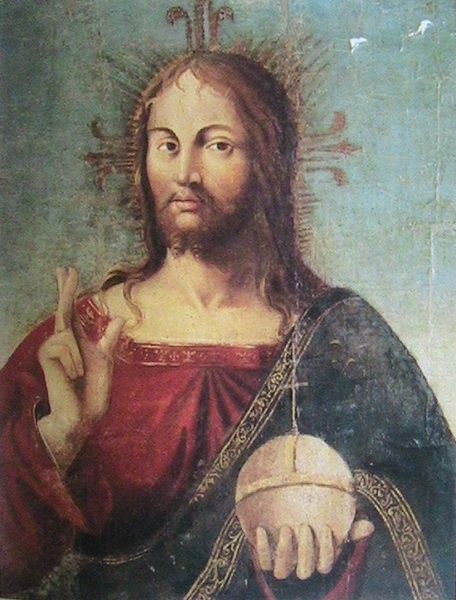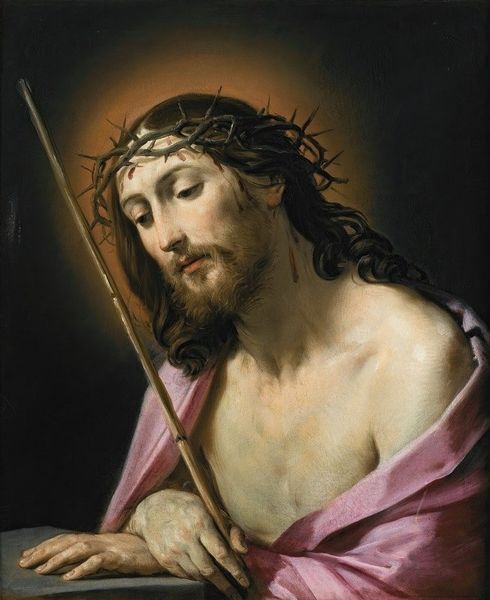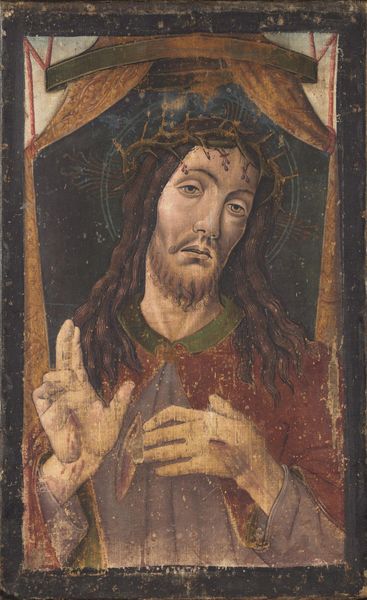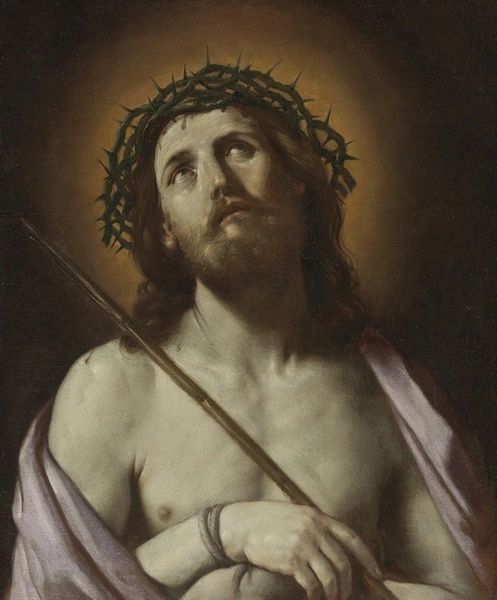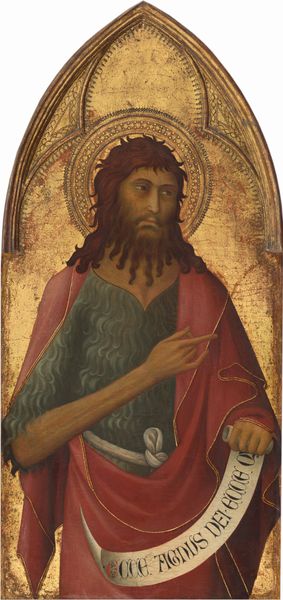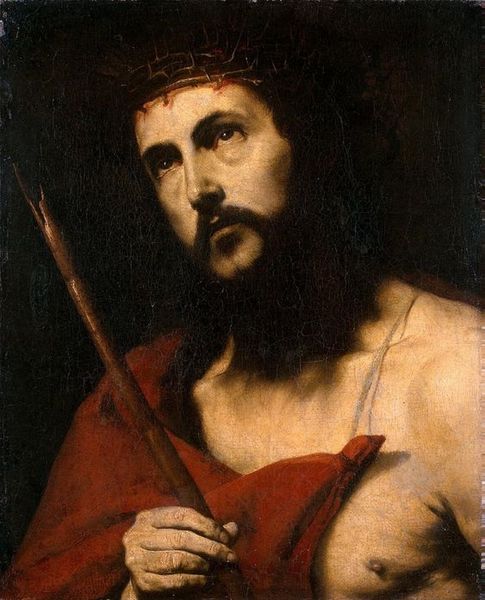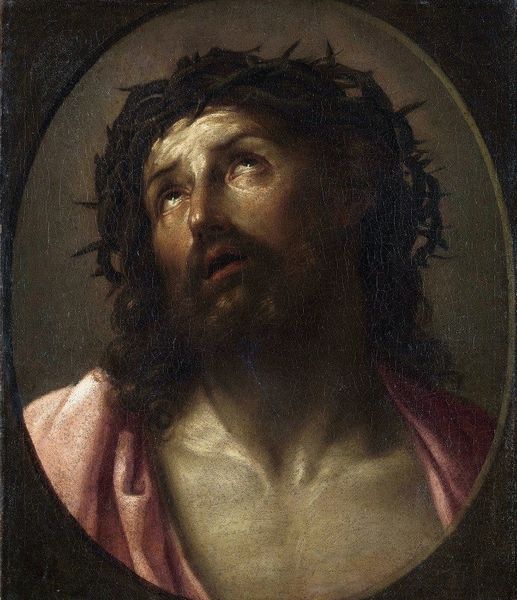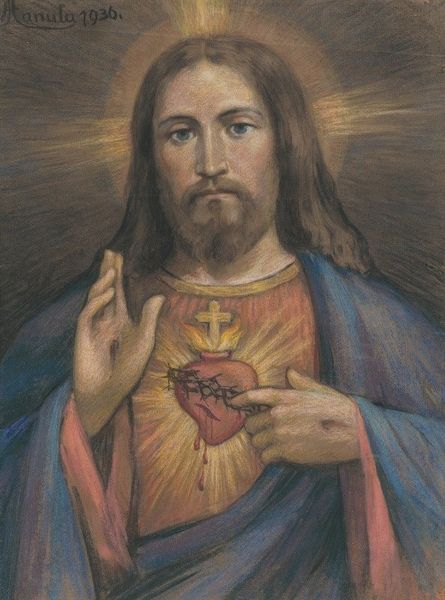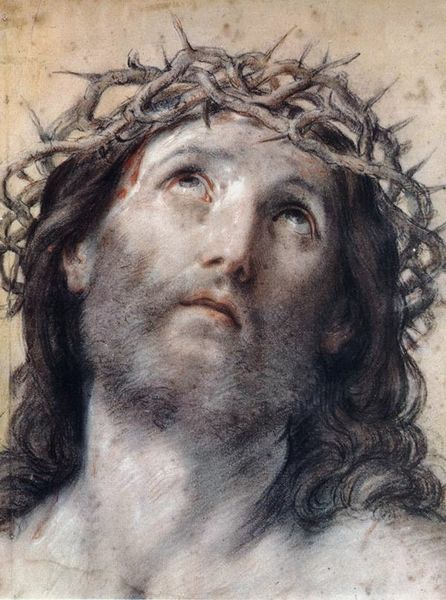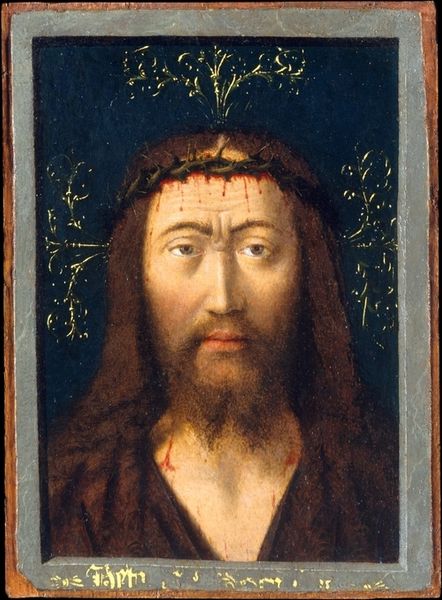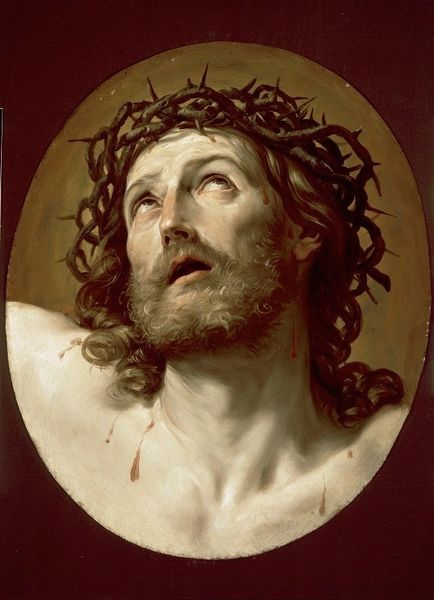
tempera, painting
#
portrait
#
tempera
#
painting
#
history-painting
#
italian-renaissance
#
christ
Dimensions: 48 x 32 cm
Copyright: Public domain
Curator: Looking at Botticelli's "Christ Crowned with Thorns," executed around 1500 with tempera, I immediately feel the somber mood, a kind of quiet intensity. It's surprisingly intimate, almost a devotional object. What do you notice first? Editor: Immediately, that hand. The way it gestures—is it a blessing, a warning? The details—you can almost feel the texture of the cloth and the sharpness of the thorns against His brow. The somber feeling that this image produces certainly feels a bit different than his other artwork; his most famous artwork tend to portray spring and cheerfulness, and this is very much not the case. Curator: Absolutely. That gesture is complex; it references Byzantine iconography and conveys suffering alongside divine authority. This image resonates with pre-existing symbols. Consider the Crown itself; its roots burrow into the terrestrial plane but from each individual barb emanates a spark or flash of brilliant divine energy. Botticelli pulls from a toolbox that spans history to impart layered significance in the image. Editor: Yes! It's like those disparate objects are in dialogue. What also strikes me is his gaze. His expression does not feel defeated or hopeless, but very tired; he looks world-weary and yet knowing. And I'm fascinated by that thin scar bisecting his hand. Curator: Precisely. And these types of gestures become familiar and coded in culture, each variation providing deeper meaning. He’s deliberately employing specific poses that would be immediately understood and deeply evocative for the Renaissance viewer. That hand alone becomes an act of rhetorical authority through subtle symbolism. Editor: Which makes you wonder how different audiences through the ages have interpreted these gestures. What speaks across time, and what is utterly lost? It also brings this incredibly tragic story and makes it real by showcasing small wounds that most images hide or overlook. Curator: In closing, Botticelli's painting uses both gesture and form to convey both hope and suffering. As such it echoes across history in powerful ways, resonating deeply within us because he has provided such compelling iconic material. Editor: Ultimately, it’s Botticelli’s unflinching honesty, depicting a relatable sorrow alongside holiness that makes it endlessly engaging and challenging, isn't it? It's an act of devotion, not just for the artist, but for us as viewers, centuries later.
Comments
No comments
Be the first to comment and join the conversation on the ultimate creative platform.

